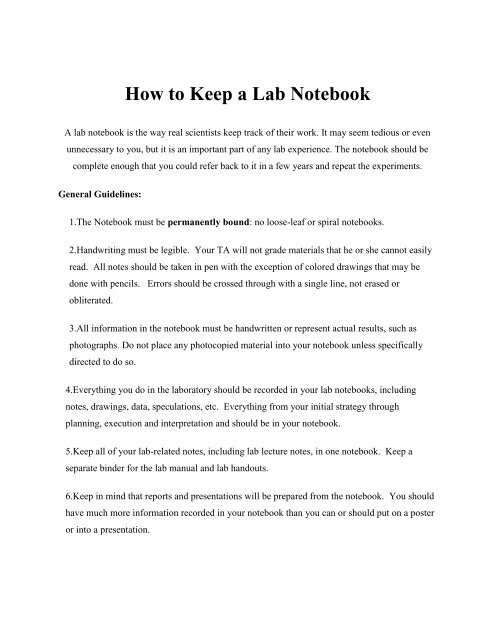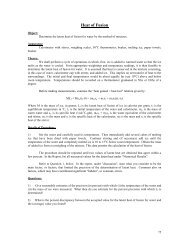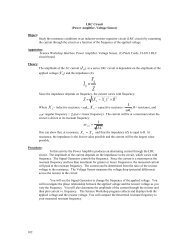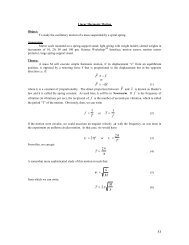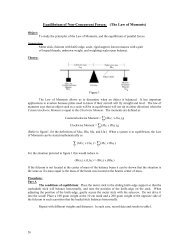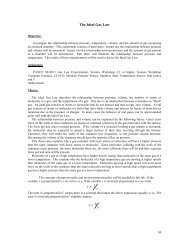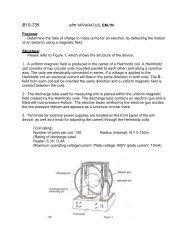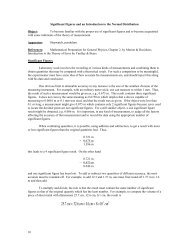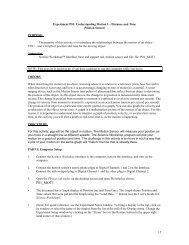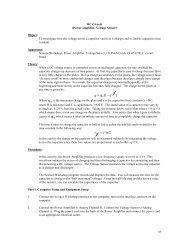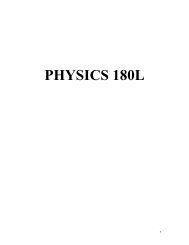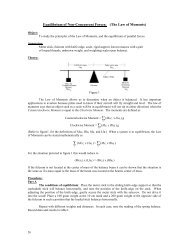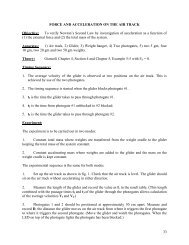GENERAL PHYSICS LAB PHYSICS 152L FALL -2010
GENERAL PHYSICS LAB PHYSICS 152L FALL -2010
GENERAL PHYSICS LAB PHYSICS 152L FALL -2010
Create successful ePaper yourself
Turn your PDF publications into a flip-book with our unique Google optimized e-Paper software.
How to Keep a Lab NotebookA lab notebook is the way real scientists keep track of their work. It may seem tedious or evenunnecessary to you, but it is an important part of any lab experience. The notebook should becomplete enough that you could refer back to it in a few years and repeat the experiments.General Guidelines:1.The Notebook must be permanently bound: no loose-leaf or spiral notebooks.2.Handwriting must be legible. Your TA will not grade materials that he or she cannot easilyread. All notes should be taken in pen with the exception of colored drawings that may bedone with pencils. Errors should be crossed through with a single line, not erased orobliterated.3.All information in the notebook must be handwritten or represent actual results, such asphotographs. Do not place any photocopied material into your notebook unless specificallydirected to do so.4.Everything you do in the laboratory should be recorded in your lab notebooks, includingnotes, drawings, data, speculations, etc. Everything from your initial strategy throughplanning, execution and interpretation and should be in your notebook.5.Keep all of your lab-related notes, including lab lecture notes, in one notebook. Keep aseparate binder for the lab manual and lab handouts.6.Keep in mind that reports and presentations will be prepared from the notebook. You shouldhave much more information recorded in your notebook than you can or should put on a posteror into a presentation.


